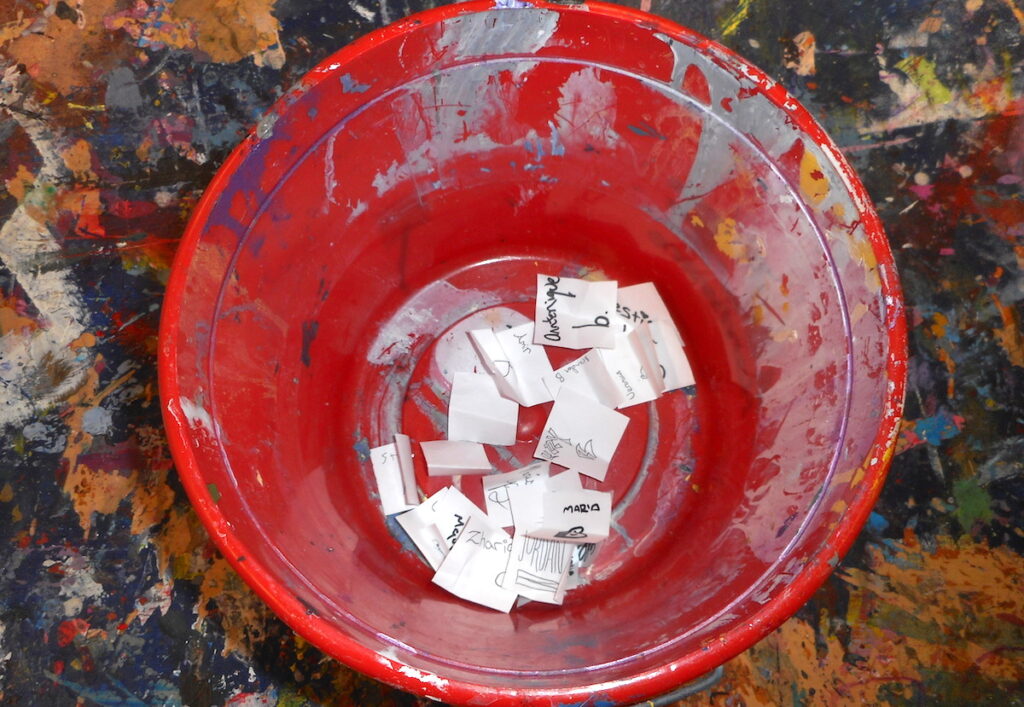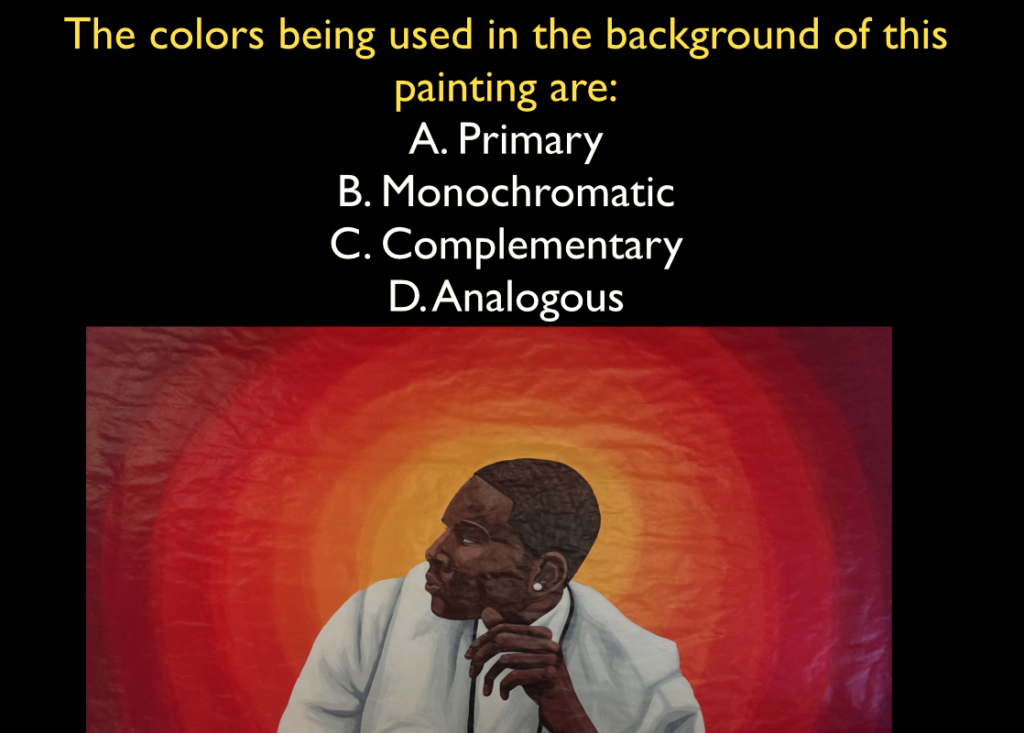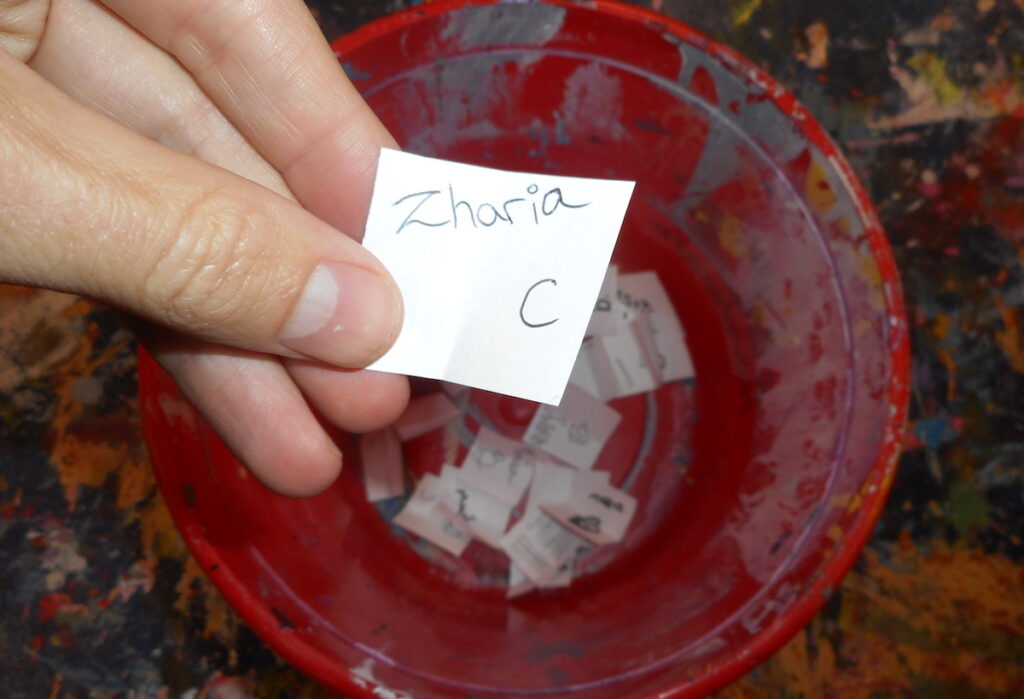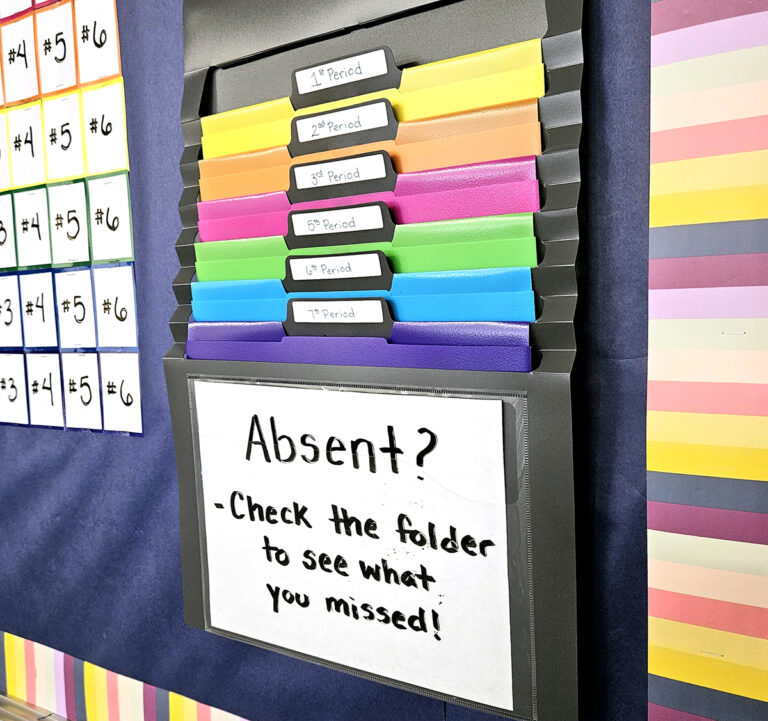How do you begin class each day? Is it a “do-now” activity? Do you read the agenda, objectives, and outcomes with students? Are you looking for a routine that keeps students interested and also guides learning and focus? Perhaps it’s time to give the “Question of the Day” a try! Beginning each class with a question gets students thinking and helps them shift into a problem-solving mindset.
Logistics
All you need for the “Question of the Day” is an LCD projector, your favorite electronic device, some scratch paper, and a bucket. Begin by greeting students at the door and handing them a small piece of paper. When the final bell rings and class has officially started, turn the lights down to focus attention. Project the “Question of the Day” as one slide in any presentation format. Have one student read the question aloud. Another student can read the possible answers to this multiple-choice question. Students should write their names and answers on their slip of paper, and a third student can collect all the answers in the bucket.

At the end of the period, revisit the “Question of the Day.” Re-read the question and select names at random from the bucket. The first name chosen with the correct answer is the winner! You may choose to offer a prize as an added incentive. Sometimes a student gets to leave early (20 seconds before the bell), or sometimes students can choose from the “Mystery Box” (which contains pencils, erasers, or other inventive items). Once class is over, you may choose to save the slips of paper to gather quick assessment data, or simply recycle them.
5 Ways to Use this Strategy in Your Classroom
The “Question of the Day” can serve many purposes. It also allows some creativity to frame the thinking at the beginning of each class. Here are some implementation tips and reasons why the “Question of the Day” can help enhance your classroom:
1. Instant Reivew
When students are learning new content, the “Question of the Day” provides an opportunity for instant review. If your class is in the middle of learning about analogous colors, the “Question of the Day” can be centered around which color would complete an analogous scheme. If you are studying symbolism, the “Question of the Day” can ask students to determine what a symbol best represents. Reviewing content can go beyond the realms of the art world to teach universal test-taking strategies as well.

2. Easy Transitions
This activity can foreshadow the direction of the class. If you are about to begin a new unit on a theme or a new technique, the question can help students begin to think about where class is heading. If you are starting a historical research unit, the question can show images of Olmec art and ask, “Who is predominantly considered the earliest civilization of Mesoamerica?” The types of responses and discussion generated will help students broaden their ideas and segue into new content.
3. Build Excitement
The fun part of the “Question of the Day” is that it can be about anything. It can easily relate to the themes and content of art class. When doing graffiti-inspired work, it is exciting for students to see images of local graffiti murals from their daily experience and then ask them to identify the neighborhood or streets where the murals are located. However, questions can also relate to almost any other topic as well. Asking students to correctly answer trivia around specific holidays, current or historical events, and silliness make for high-interest class starters, too.

4. Gather Data
Depending on your philosophy, capacity, and circumstances, when students all have given an answer to a question there is the potential for using that data. When the question relates to specific content, such as what is the complementary color of red-orange, it can help to dump out the bucket of student responses and gauge what percentage of students know the answer. Collecting quick data can help you gauge student learning and identify re-teaching opportunities.
5. Public Recognition
One way to build more energy and fun into the classroom environment is to publicly recognize a winner. When there is one minute left in class, begin pulling names from the bucket until you get a student who answered correctly. It can be fun to give clues or prompts so students can guess the person selected. A prize can also be a part of the ritual. Allowing the student with the correct answer to be the first one to leave a few seconds early is usually enough. If you have more ambition, you can create a “Mystery Box” with items you find at dollar stores. It doesn’t take much to make the winner feel special!

The “Question of the Day” can be an effective tool for student focus, review, and thinking at the beginning of each class. It also has potential to add some life and community building with your students. The variety of approaches, transitions, and discussions the questions can lead to are endless. This strategy can be used for one quarter, one semester, or all year. So, the question is, “How can you use the ‘Question of the Day’?”
If you’d like even more classroom management tips, check out the course Managing the Art Room. You’ll have the chance to identify your key classroom management struggles and learn exactly what to do about them!
How do you start your classes each day?
Do you think the “Question of the Day” would work for you? Why or why not?
Magazine articles and podcasts are opinions of professional education contributors and do not necessarily represent the position of the Art of Education University (AOEU) or its academic offerings. Contributors use terms in the way they are most often talked about in the scope of their educational experiences.





